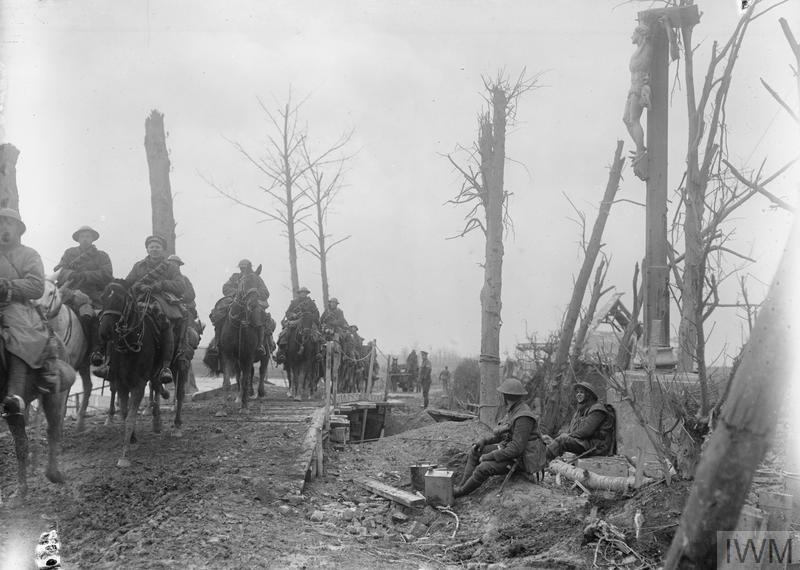St Quentin
The Battle of St. Quentin was a battle during Operation Michael which was a major German military offensive that began the German Spring Offensive on 21 March 1918. It was launched from the Hindenburg Line, in the vicinity of Saint-Quentin, France. Its goal was to break through the Allied lines and advance in a north-westerly direction to seize the Channel Ports, which supplied the British Expeditionary Force (BEF) and to drive the BEF into the sea.
The Honour was awarded to the 3rd Hussars.
Bapaume, 1918
The First Battle of Bapaume in March 1918, was a battle during Operation Michael which was a major German military offensive that began the German Spring Offensive on 21 March 1918. It was launched from the Hindenburg Line, in the vicinity of Saint-Quentin, France. Its goal was to break through the Allied lines and advance in a north-westerly direction to seize the Channel Ports, which supplied the British Expeditionary Force (BEF) and to drive the BEF into the sea.
The Honour was awarded to the 3rd Hussars.
Detail
When Ludendorff opened his last campaign, on the 21st of March 1918, the 3rd Hussars were with their brigade north-east of Noyon.
Since the beginning of the year, they had served two spells in the trenches, uneventful apart from the appalling conditions, with snow three feet deep at times; and since the end of February, they had been preparing to meet the big offensive.
The regiment and their horses were concealed in the woods about Grandrue, with brigade dismounted parties ready to be moved forward in lorries the moment the Germans forced the line.
The attack by the Germans started with an intense bombardment of gas and high explosive shells soon before 5 am on the 21st. The weather came to their aid with a thick white fog that hid both the advancing infantry and the SOS signals sent up by the British outposts, thus robbing them of the support of their guns.
By the time the dismounted battalions of cavalry were ordered up the Germans had already reached the second line of the British defence, and had broken through at several points.
When the fog cleared, around midday, the battle was joined in earnest, with bloody hand-to-hand combat along the entire front as the enemy hacked their way forward. At 7.30 in the evening, the 3rd Hussars were ordered over the Crozat Canal to cover the retreat of detachments of the Queens and the Buffs, near the fort of Liez.
During the night the remaining divisions of the 3rd Corps were pulled back, and the regiment remained on the Liez-Vendeuill road until all the infantry had crossed the canal, themselves withdrawing soon before the bridges were demolished.
Between 21 March and 2 April as the Germans pushed almost to the gates of Amiens the 3rd Hussars paid a terrible price; 6 officers and 122 other ranks, killed and wounded.
But the bloodiest battle was yet to come at Rifle Wood, on April the 1st, after the 2nd Cavalry Division had received an urgent call to join the Fifth Army in front of Amiens.


